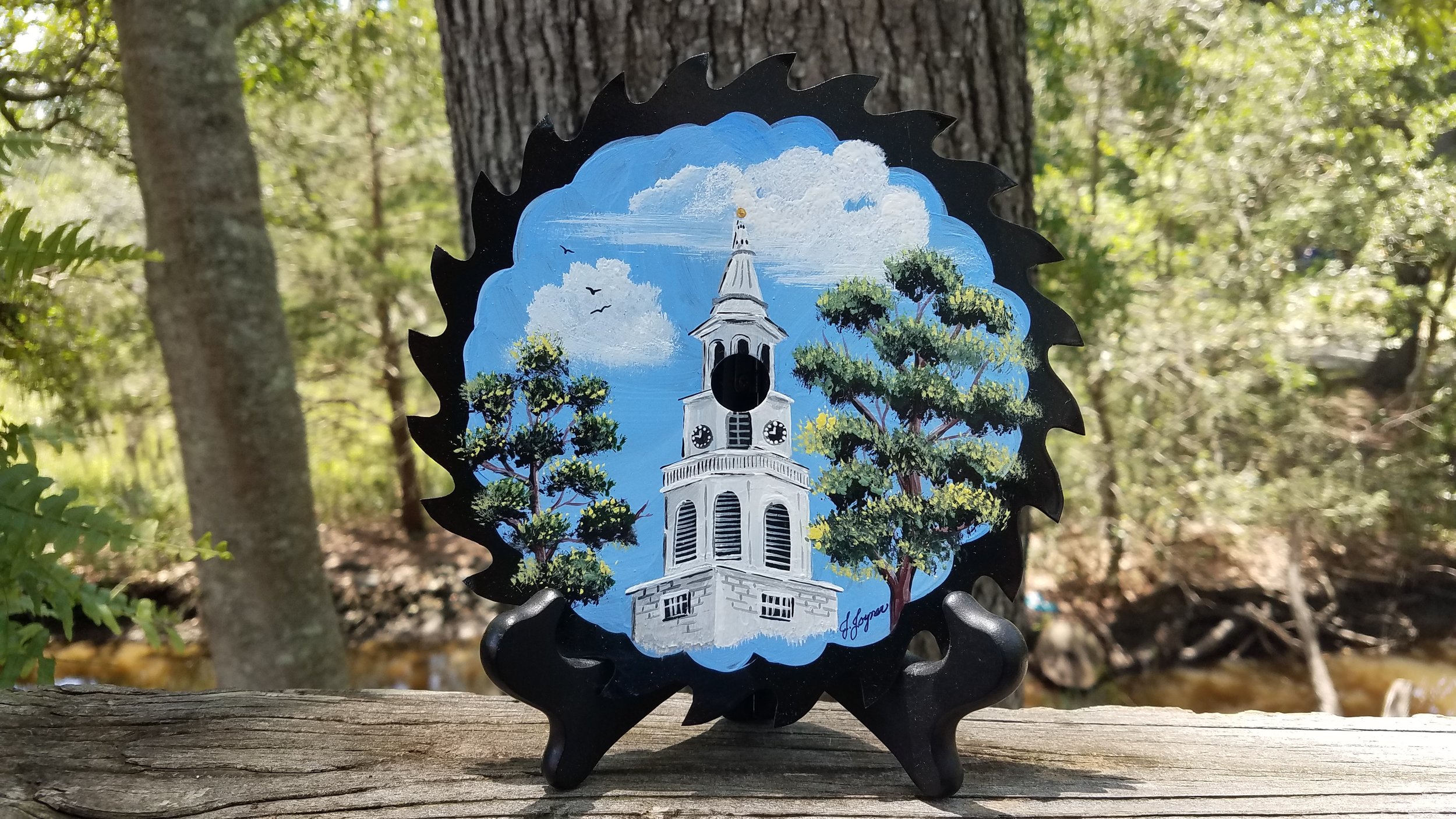
Shop & Such
Aenean lacinia bibendum nulla sed consectetur. Donec ullamcorper nulla non metus auctor fringilla. Duis mollis, est non commodo luctus, nisi erat porttitor ligula, eget lacinia odio sem nec elit. Donec id elit non mi porta gravida at eget metus. Cum sociis natoque penatibus et magnis dis parturient montes, nascetur ridiculus mus.
St. Michael's Church Saw Blade
St. Michael's Church Saw Blade
- Hand-painted Circular Saw Blade
- Ring them bells! Pray them prayers! See them saws!
- Each piece is one of a kind created with acrylic paint
- Measures 7.25” x .2”
- STAND NOT INCLUDED
- Item has sharp points; Use Caution.
A Brief History of St. Michael’s Church
As you drive through downtown Charleston, as a resident or visitor, you have to wonder—how did they find the space to build so many churches? It would be easy to conclude that all the original colonists must have been refuges from the Spanish Inquisition, the French Revolution or the English Reformation of the Anglican Church!
Charleston's earliest settlers built a simple wooden church at the corner of King and Broad Streets. The St. Phillips’ congregation started their services there in the early 1680s. As the town grew with the arrival of others from all over Europe, the small church could no longer house the congregation, so they built a large brick church on Church Street just four blocks away. The other property was then available for the St. Michael’s congregation to build on the King and Broad site in 1752. This opened in 1761 for services as directed by the South Carolina General Assembly.
St. Michael’s Church has remained virtually the same from that day until now except for the addition of the sacristy in 1883. The interior design of St. Michael’s is set according to the Book of Common Prayer. This puts the church on a very short list of those holding to that standard presently.
From the beginning, St. Michael’s church was a formidable edifice. The steeple was originally 193 1/2 feet in height until the 1886 earthquake caused it to sink eight inches. Inside the church there are almost too many significant pieces of art and architecture to take in with just one visit. The original chandelier, imported from London in 1803, was fitted with candles and is now, for safety’s sake, electrified. The pulpit is original to Saint Michaels and is notable for its height and its structure. The central panel on the face of the pulpit with the religious insignia was looted after the Civil War, but luckily it was later voluntarily returned. There are scars in the woodwork from the wartime bombardment of 1865. The Victorian Alter (1882), the Chancel Chairs in the vestry (1887) and the wrought iron chain rail (1772) all represent remarkable historic enhancements to not only St. Michael’s but also to Charleston.
It's impossible to conclude a visit during a service or a guided tour without paying particular attention to the gorgeous stained-glass windows and door. “Easter Morning” and “The Annunciation” were gifted to the church in 1897 and 1908 respectively. The door was a gift in 1915. The long-term restoration and preservation of the windows was completed as part of St. Michael’s 250th Anniversary Celebration.
The sounds of St. Michael’s are significant because of the Snetzler Organ installed in 1768 and restored and refurbished in 1994 by Kenneth Jones of Bray, Ireland; add to that the clock and ring of eight bells imported in 1764. All of these instruments provide the congregation and Charleston’s citizens and visitors with its hourly peel and the beautiful choral music accompanied by the magnificent organ.
It would be so easy to continue the conversation about St. Michael’s church because its history is so deep. And just think, we haven't even talked religion or politics!
~ David Joyner











